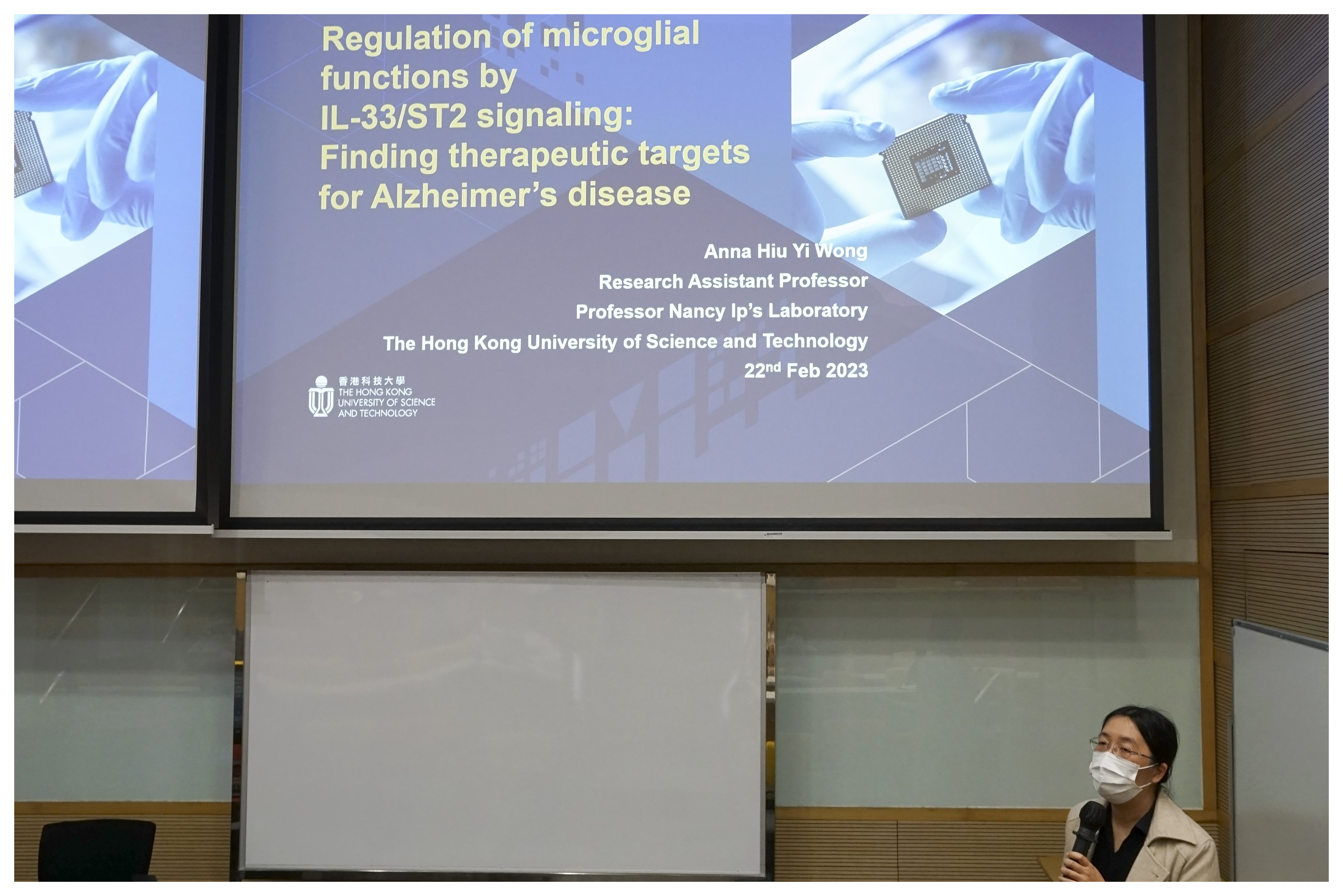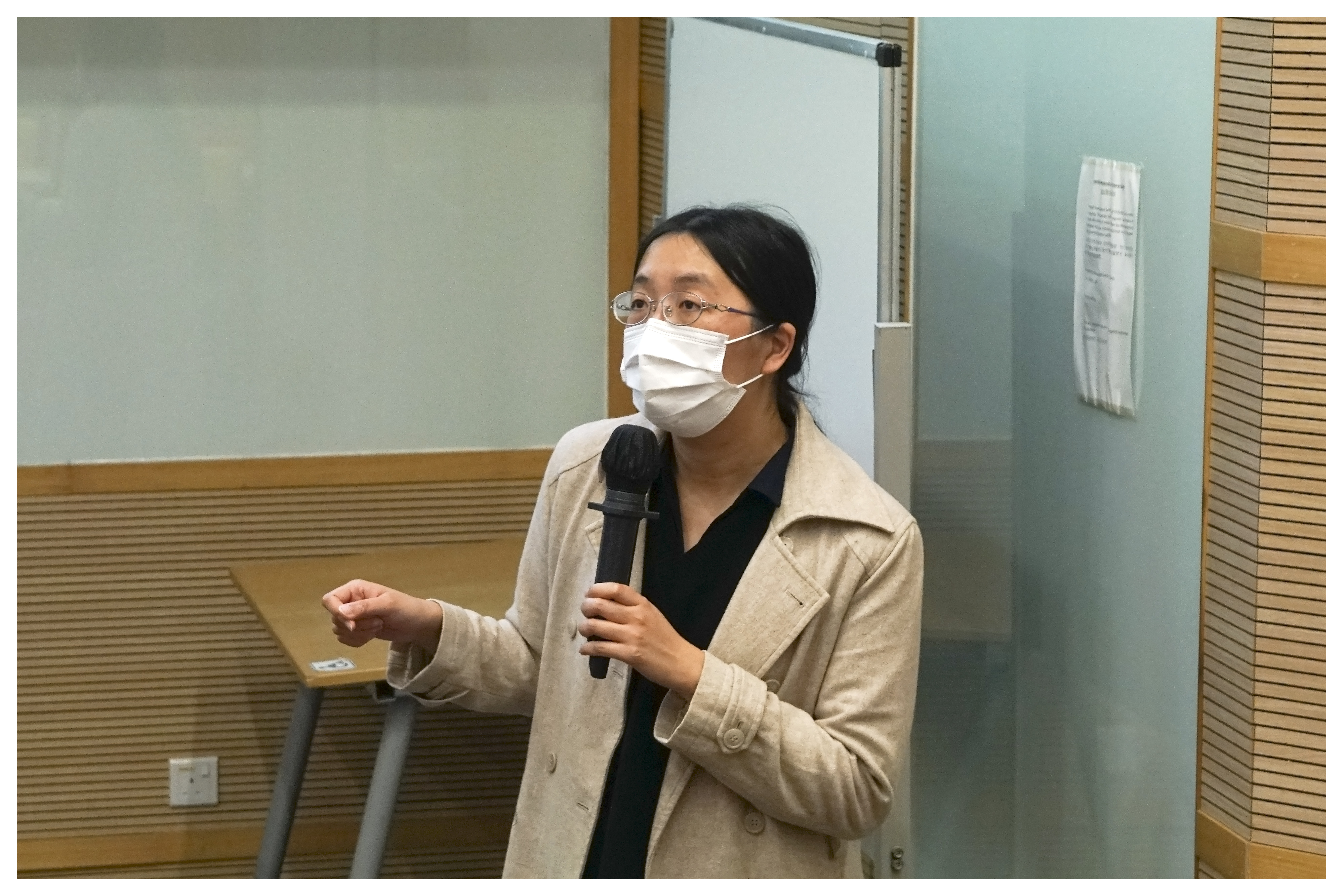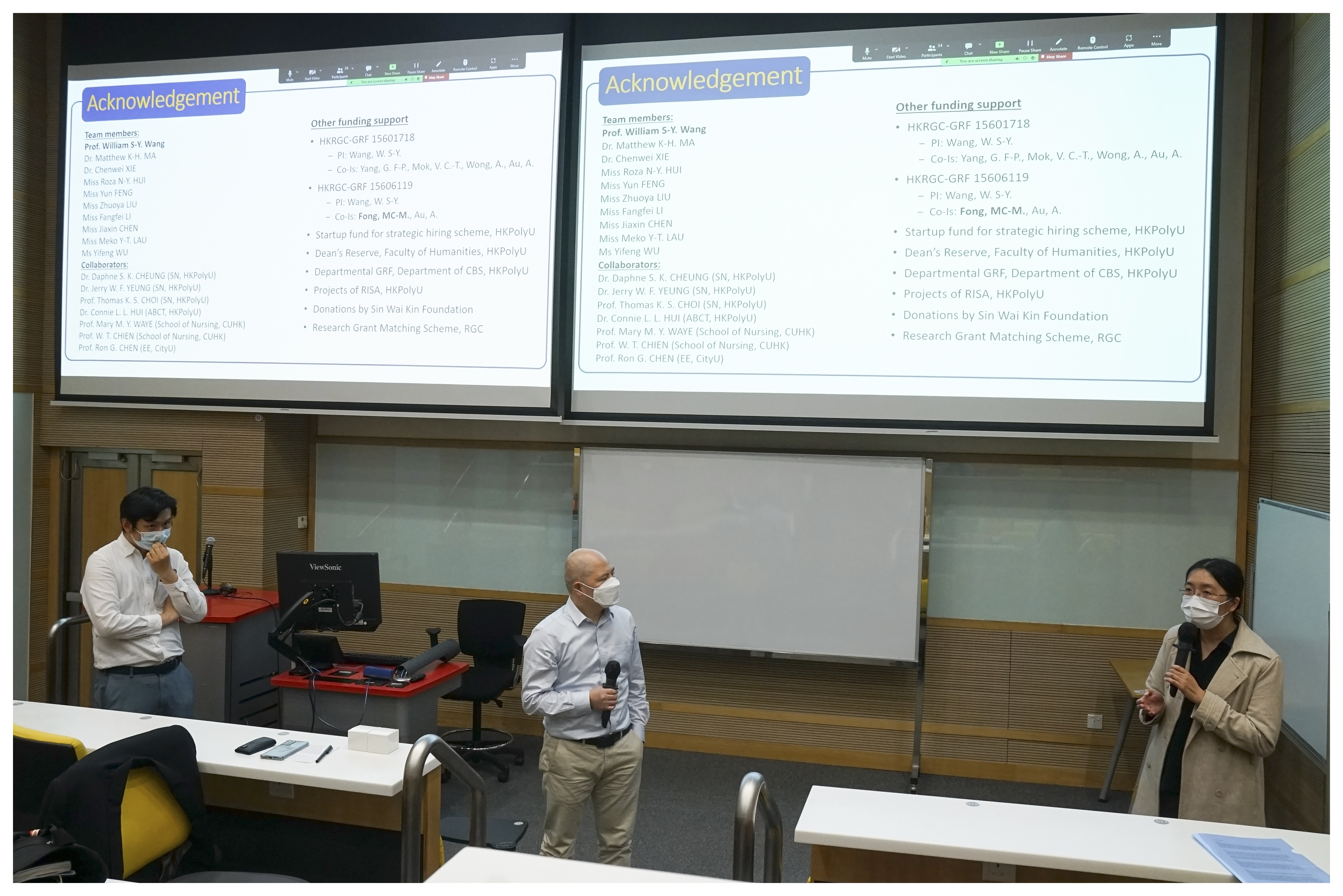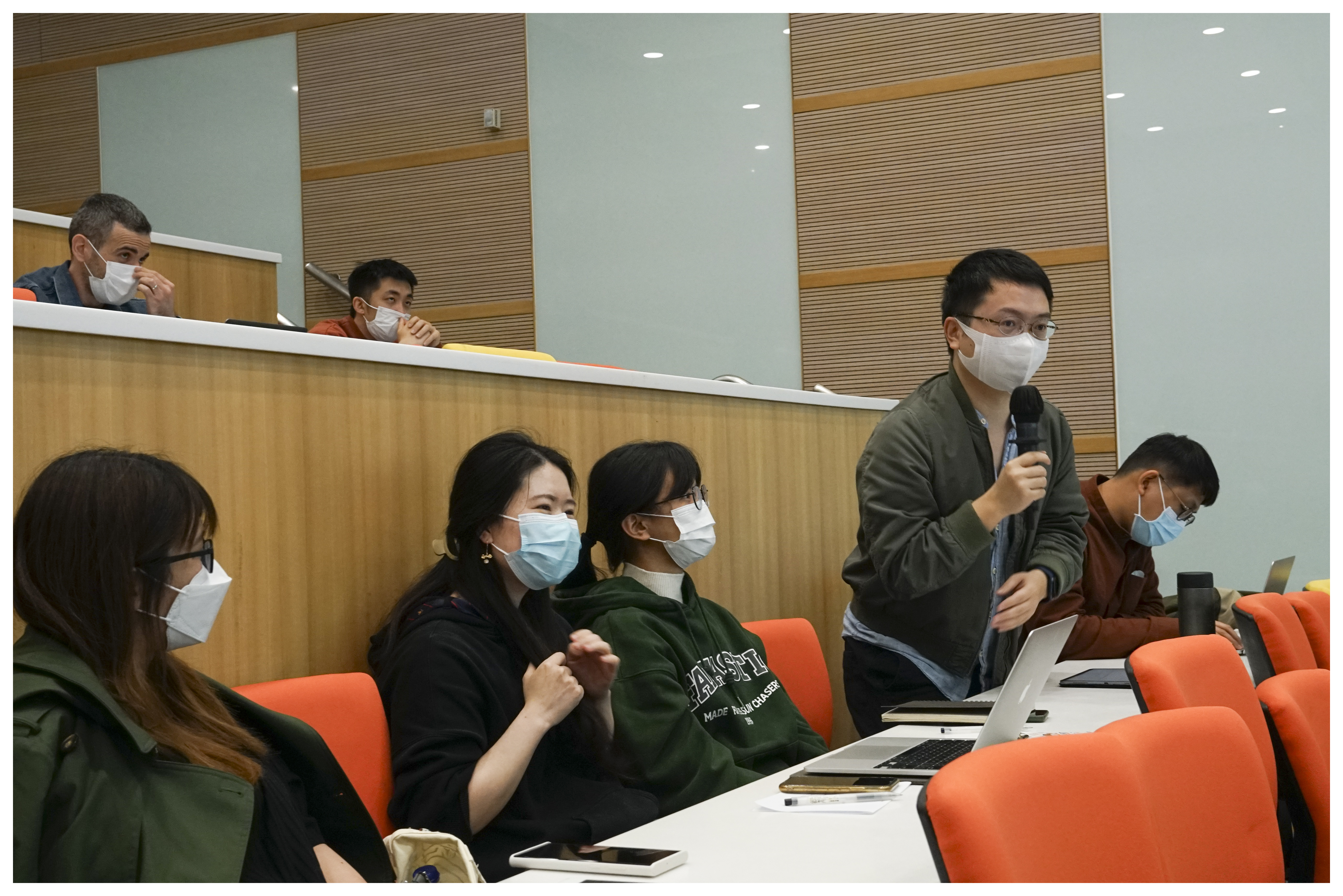Past Events
Regulation of microglial functions by IL-33/ST2 signaling: developing therapeutic targets for Alzheimer’s disease
2023.02.22 Dr. WONG Hiu Yi
Research Assistant Professor
Division of Life Science
The Hong Kong University of Science and Technology
Regulation of microglial functions by IL-33/ST2 signaling: developing therapeutic targets for Alzheimer’s disease
Alzheimer’s disease (AD) is the most common cause of dementia in the elderly population. In Hong Kong, the elderly population (≥65 years old) has been growing over the past decade, now reaching over 1 million in the local population. Risk of developing AD increases significantly with advancing age, suggesting that Hong Kong is facing an increasing incidence of AD. Patients suffering from AD have gradual cognitive decline over the disease course and eventually become debilitated. The financial burden of AD to the medical healthcare and the society is expected to increase substantially. As such, there is an urgent need to develop effective diagnostic tools for early disease diagnosis and disease-modifying therapeutics.
Pathological hallmarks of AD include the formation of amyloid plaques comprising beta-amyloid (Aβ) deposition and neurofibrillary tangles comprising pathological tau, which lead to axonal toxicity, synaptic loss, and neurodegeneration. Our group has focused on studying the mechanisms on the clearance of amyloid pathology in AD. We previously demonstrated that stimulation of interleukin -33 (IL-33) decreases amyloid deposition in AD through activation of its cognate receptor ST2 in microglia. Our recent work identifies an IL1RL1 genetic variant, which is located in ST2 genomic region, and is associated with the lowering of circulating soluble ST2 levels and reduction in the AD risk in female APOE-ε4 patients in Hong Kong Chinese population. This protective IL1RL1 genetic variant is also associated with slower cognitive decline and grey matter atrophy. Furthermore, our findings with post-mortem human brain tissues show that a lower soluble ST2 level is associated with decreased Aβ deposition together with increased Aβ-microglial interaction. The increase in microglia-plaque interaction is accompanied by a change in microglial activities at the molecular level. By using single cell RNA-sequencing, we found that decreased soluble ST2 level is associated with increased microglial activation (indicated by the increased expression of specific microglial gene markers). To conclude, plasma soluble ST2 may serve as a potential biomarker for AD and a novel target for AD therapeutic development.
> PDF for review
> Playback of Dr. WONG Hiu Yi's lecture









